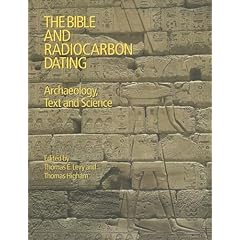Edomitesâ€â€How Early?
I’ve been a reader of BAR for about a year now and have generally enjoyed many of the articles, whether I agree with their interpretations or not. I certainly applaud the fact that a range of voices are given room to discuss the field. As an archaeologist working principally on northern-European early-medieval material, it’s always interesting to see how others approach the issues regarding the integration of archaeology and text.
However, Khirbet en-Nahas is a site of great interest that is proving to be somewhat more controversial than the publications in BAR suggest
(Levy and Najjar, “Edom and Copper,†July/August 2006, and Hershel Shanks, “Another View,†January/February 2007). Khirbet en-Nahas has much to tell us about Iron Age copper production, exchange and state formation. Levy and Najjar’s article paints a picture of an early site away from the perceived Edomite heartland (in the highlands). They give an earlier date for major exploitation of copper ore than would be expected for that area. From this, they argue that it provides evidence for an Edomite state about a century earlier than the archaeology of the highlands suggests and that it is more in keeping with Biblical sources.
In “Another View,†the BAR editor critiques Israel Finkelstein’s response in the journal Tel Aviv to Levy and Najjar in which Finkelstein tries to place the Edomite fortress more within his low chronology.
It appears that Levy and Najjar have a strong case, especially given the radiocarbon dating, to interpret the site within an early Iron Age culture. However, it is these radiocarbon dates that have themselves proven to be controversial, and this has yet to be discussed in BAR.
Levy and Najjar’s BAR article is based on their scientific paper.c Presenting their radiocarbon dates based on the calibrated dates (where the calculated dates are fitted against a curve that provides a more accurate date), they use these calibrated dates plus a range of other information (stratigraphic, pottery, textual, etc.) in a package called BCal to further modify the dating sequence, using Bayesian statistics. The dates thus produced are the ones used by Levy and Najjar in their BAR article and are, on average, around a century earlier than the normal calibrated radiocarbon dates. This is where the controversy begins.
In a response to Levy and Najjar’s scientific paper, another group of scholars expressed their concerns about these dates.d The debate can be followed on both the project Web site and online,e and includes responses from Levy and Najjar to the critiques.
In a review article,f Charlotte Whiting criticizes Levy et al.’s paper on Khirbet en-Nahas for its lack of clarity over contextual information for where the radiocarbon samples came from, and so it is unclear quite how secure these contexts were (i.e., whether they could have been contaminated by material of a different date).
None of this, of course, means that the early dates or interpretations for Khirbet en-Nahas are necessarily wrong, but there needs to be a great deal more persuasion and transparency of Levy et al.’s methodology before they are accepted by many scholars.
It seems likely to be a discussion that has some way to run yet, and all the better for it!
All archaeology requires interpretation, including results provided by “hard†science. At the very least, BAR readers deserve to know that the dating sequence for Khirbet en-Nahas is controversial.
Dr. John Naylor
Ashmolean Museum
Oxford, England
http://www.basarchive.org/sample/bswbBr ... rticleID=3

